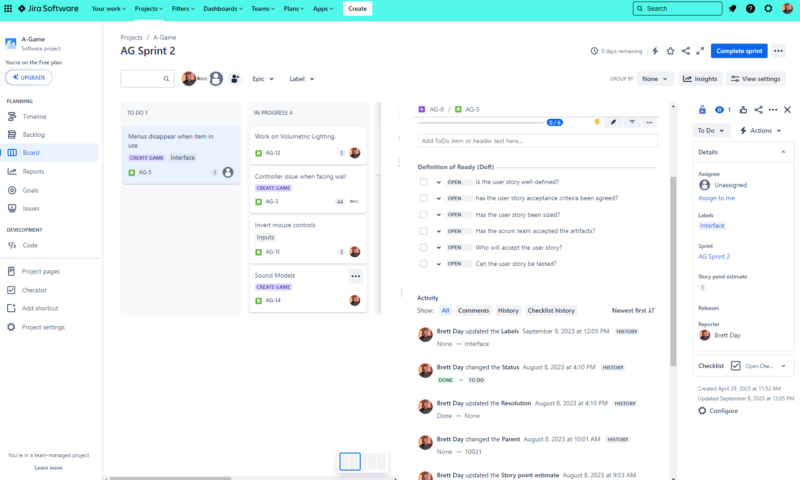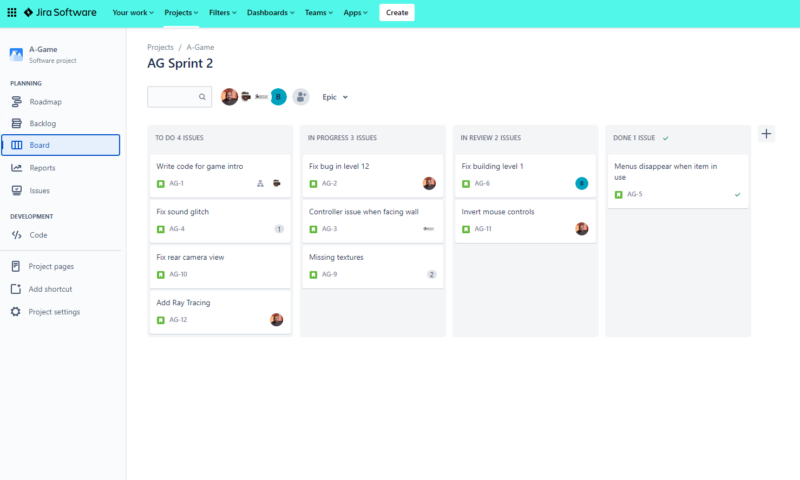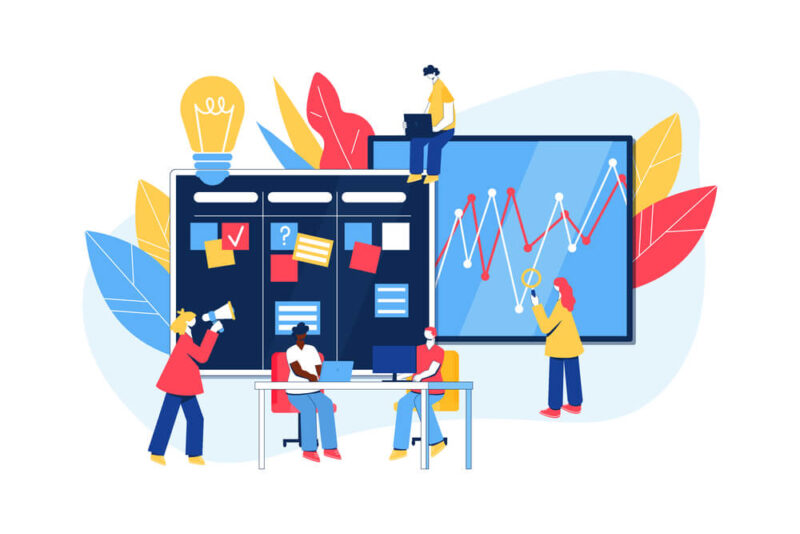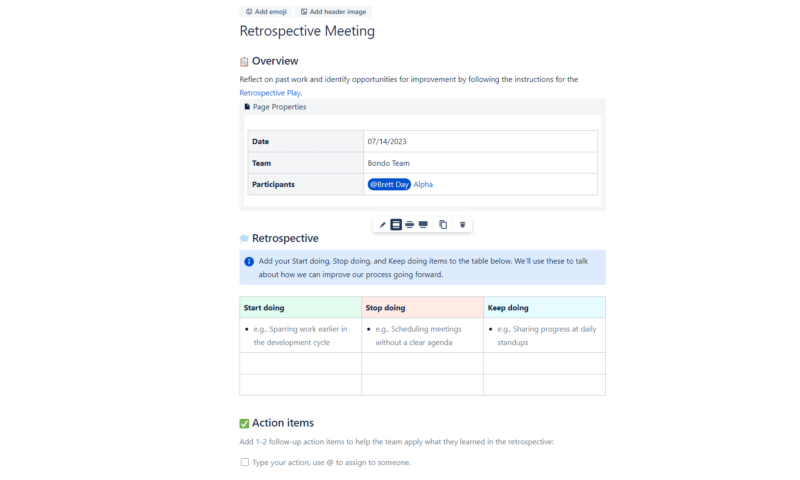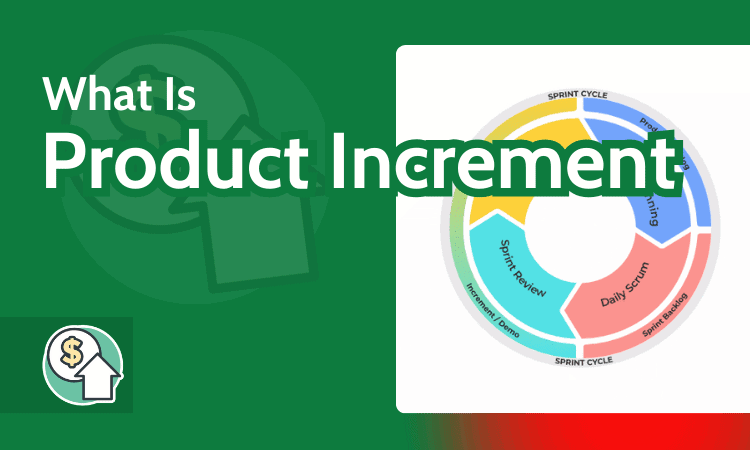
Agile frameworks and methodologies are filled with terms that may be confusing for anyone who is new to agile. A product increment, which can be managed and tracked with the best project management software, is one such term, so we have produced this handy guide to help explain it.
Below, we will explain what product increments are in agile frameworks and how they work. We’ll also cover some key benefits of implementing a product increment strategy into your agile workflow and what that process looks like. We know you’re eager to learn, so let’s get started.
Learn more about our editorial team and our research process.
What Is a Product Increment?
In scrum and other agile frameworks, a working product increment is a new version of a software solution or a product that a development team creates during a time-boxed work session called a sprint.
A product increment contains new features and enhanced functionality, and it removes any bugs or issues that may have existed in prior increments. Sprints are carried out until all of the software’s requested features have been built and added to the final iteration of the product.
What Is an Example of an Increment in Scrum?
In the scrum framework, product increments are created in a process that can take up to four weeks. First, scrum teams attend a kickoff meeting, which a scrum master holds. Then, the product owner and scrum developers meet to create user stories (features) that must be developed for the software. This meeting is called a sprint planning session.
During sprint planning sessions, the product owner and the developers create and agree on a series of requirements: the definition of ready (DoR) and the definition of done (DoD). The DoR dictates what user stories must contain before the team starts working on them, and the DoD specifies how the features must function before they can be considered complete.
The next phase of the scrum process involves the scrum team creating software during a sprint. At the end of the sprint, when the product increment has been developed, a sprint review takes place. The latest software iteration is demoed during the review, and the client provides feedback. Lastly, a retrospective meeting is held, and then the development cycle starts over.
Product Increment vs Program Increment
A product increment is a new version of working software created during a sprint that lasts up to four weeks. A program increment (PI) is a time-boxed event used in a scaled agile framework called SAFe.
In SAFe, agile release trains (ARTs), enterprise-sized teams comprising numerous scrum teams, create working versions of software together. Program increments can last eight to 12 weeks, at the end of which the latest program increment is tested in front of clients and stakeholders.
Benefits of Product Increments
Agile workflows that support frequent product increments come with benefits that project managers and scrum masters will appreciate. Some of the most common benefits include:
- Enhanced collaboration: Cross-functional teams communicate and work together to develop small pieces of code that combine to form a working product increment during sprints.
- Reduced costs: Close-knit teams working together towards a common goal can minimize the number of errors and issues in the code, which can lead to reduced costs throughout a project.
- Frequent testing: Workflows that produce regular product increments allow for frequent testing, ultimately leading to higher-quality end products and greater customer value.
- Continuous improvement: Cross-functional teams developing frequent product increments strive to continually improve so that development times, processes and workflows can be enhanced in each sprint.
Challenges in Product Increment Delivery
Using workflows that enable frequent product increment delivery can be beneficial for teams. However, they might also face challenges. Some of the most common challenges include:
- Anti-patterns: Creating frequent product increments can be stressful at the best of times. With tight deadlines always on the horizon, it can be easy for even the most experienced teams to slip into scrum anti-patterns, which can derail projects.
- Scope creep: Scrum and agile methods allow stakeholders and clients to provide feedback and frequently request product changes. If not kept in check, implementing too many changes can lead to scope creep.
- Resource management: Scrum teams are small, and sprint time frames aren’t very long. If a team member falls ill or resources become scarce, it can be easy to overshoot product increment deadlines.
How Is a Product Increment Created?
Below, we’ll examine the steps to creating a product increment. The list below is typical in scrum but can be used in many agile project management methodologies.
- Hold a Sprint Planning Meeting and Create User Stories
One of the first stages of an iterative development process is holding a sprint meeting. During this meeting, the product owner and the development team discuss the project and its goals, and they create user stories, the definition of ready and the definition of done.

- Start a Sprint
Next, the development team starts a sprint, during which the team develops product features in such a way that they can demo the software at the end of the sprint. Along with product development, one of the essential activities during a sprint is a daily stand-up meeting, where the scrum team can discuss product increment development and resolve issues.

- Hold a Sprint Review
At the end of a sprint, a review meeting should be held. During this meeting, the development team demos the latest product increment one feature at a time so clients and stakeholders can offer fast feedback and request changes. A sprint review is a concrete stepping stone towards the next product iteration.

- Plan a Sprint Retrospective Meeting
Once the scrum team has received feedback from clients and stakeholders, it should hold a sprint retrospective meeting. During this meeting, the team discusses all prior product increments, wins and losses, and what can be done better during the next sprint. A sprint retrospective is designed to help build a culture of continuous improvement.

- Restart the Development Lifecycle
After the retrospective, the team is ready to build the next product increment. A sprint planning meeting is held, backlog refinement takes place, client requests are added and user stories are created before the next sprint begins. This development lifecycle continues until the product is ready to be delivered to the client.
{“@context”:”https://schema.org”,”@type”:”HowTo”,”name”:”Step by Step”,”description”:”These steps show how to create a product increment.”,”totalTime”:”P00D02M00S”,”supply”:0,”tool”:0,”url”:”https://www.cloudwards.net/product-increment/#step-by-step”,”step”:[{“@type”:”HowToStep”,”name”:”Hold a Sprint Planning Meeting and Create User Stories”,”position”:1,”url”:”https://www.cloudwards.net/product-increment/#hold-a-sprint-planning-meeting-and-create-user-stories”,”itemListElement”:{“@type”:”HowToDirection”,”text”:”One of the first stages of an iterative development process is holding a sprint meeting. During this meeting, the product owner and the development team discuss the project and its goals, and they create user stories, the definition of ready and the definition of done.n”},”image”:{“@type”:”ImageObject”,”inLanguage”:”en-US”,”url”:”https://www.cloudwards.net/wp-content/uploads/2024/04/jira-definition-of-ready-checklist.png”}},{“@type”:”HowToStep”,”name”:”Start a Sprint”,”position”:2,”url”:”https://www.cloudwards.net/product-increment/#start-a-sprint”,”itemListElement”:{“@type”:”HowToDirection”,”text”:”Next, the development team starts a sprint, during which the team develops product features in such a way that they can demo the software at the end of the sprint. Along with product development, one of the essential activities during a sprint is a daily stand-up meeting, where the scrum team can discuss product increment development and resolve issues.n”},”image”:{“@type”:”ImageObject”,”inLanguage”:”en-US”,”url”:”https://www.cloudwards.net/wp-content/uploads/2024/04/jira-sprint.png”}},{“@type”:”HowToStep”,”name”:”Hold a Sprint Review”,”position”:3,”url”:”https://www.cloudwards.net/product-increment/#hold-a-sprint-review”,”itemListElement”:{“@type”:”HowToDirection”,”text”:”At the end of a sprint, a review meeting should be held. During this meeting, the development team demos the latest product increment one feature at a time so clients and stakeholders can offer fast feedback and request changes. A sprint review is a concrete stepping stone towards the next product iteration.n”},”image”:{“@type”:”ImageObject”,”inLanguage”:”en-US”,”url”:”https://www.cloudwards.net/wp-content/uploads/2023/10/sprint-review.jpg”}},{“@type”:”HowToStep”,”name”:”Plan a Sprint Retrospective Meeting”,”position”:4,”url”:”https://www.cloudwards.net/product-increment/#plan-a-sprint-retrospective-meeting”,”itemListElement”:{“@type”:”HowToDirection”,”text”:”Once the scrum team has received feedback from clients and stakeholders, it should hold a sprint retrospective meeting. During this meeting, the team discusses all prior product increments, wins and losses, and what can be done better during the next sprint. A sprint retrospective is designed to help build a culture of continuous improvement.n”},”image”:{“@type”:”ImageObject”,”inLanguage”:”en-US”,”url”:”https://www.cloudwards.net/wp-content/uploads/2024/04/confluence-retrospective.png”}},{“@type”:”HowToStep”,”name”:”Restart the Development Lifecycle”,”position”:5,”url”:”https://www.cloudwards.net/product-increment/#restart-the-development-lifecycle”,”itemListElement”:{“@type”:”HowToDirection”,”text”:”After the retrospective, the team is ready to build the next product increment. A sprint planning meeting is held, backlog refinement takes place, client requests are added and user stories are created before the next sprint begins. This development lifecycle continues until the product is ready to be delivered to the client.n n”}}]}
Final Thoughts
Producing frequent product increments can lead to higher-quality products, greater customer value, enhanced team collaboration and reduced costs. The process might require an adjustment period if you’re moving from traditional project management methodologies, but the benefits of being able to conduct testing before a project is finished are immense.
What has your experience with agile workflows and frequent product increments been like? Do you prefer regularly producing testable products, or do you like waiting until the end of a project to test and demo? Let us know in the comments. Thanks for reading.
FAQ: Product Increment in Scrum
-
In scrum, sprints are time-boxed work sessions during which product increments are created. They generally last between one and four weeks.
-
A product increment occurs when developers create new features during a time-boxed sprint. Product increments (features) are continually added to a product until the final version is ready to be released to the client.
-
A product release occurs when the final product is ready to be delivered to the client. A product increment is one stage or version of the software that has been developed but is not yet the finished product.
-
The definition of done is a series of requirements that all product increments must meet before they can be considered finished. Each product increment will have a new DoD that the product owner and the development team agree on.Sources for Publication
Sources for Publication
- 17th State of Agile Report
The post What Is a Product Increment? Your Agile Glossary Must-Have in 2024 appeared first on Cloudwards.


